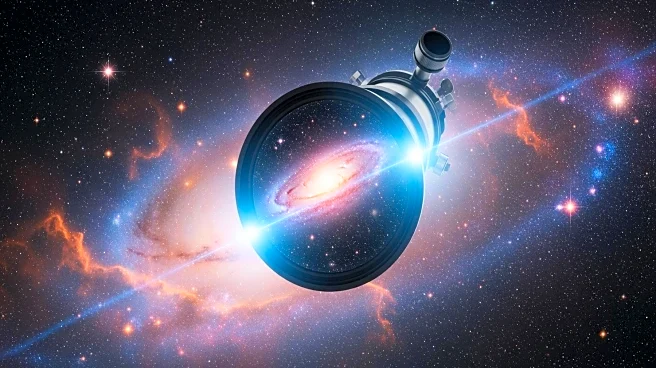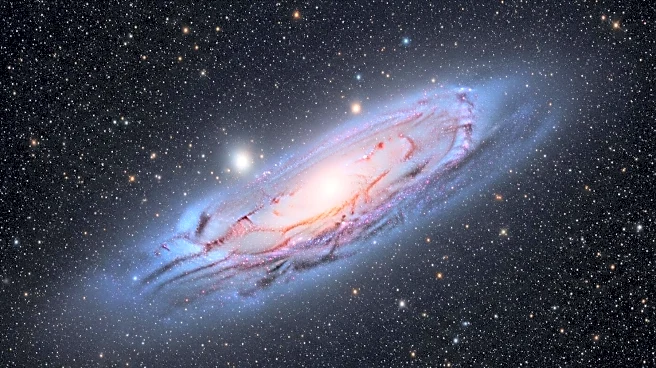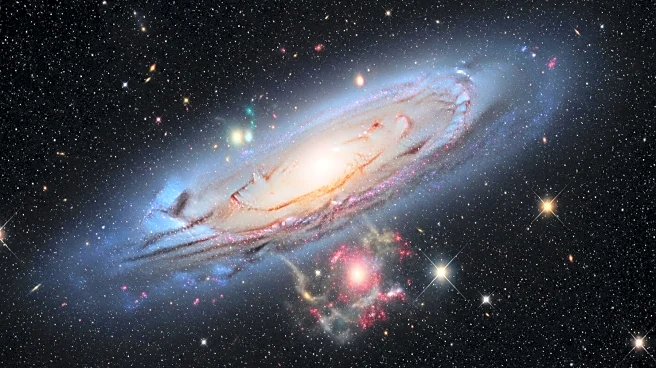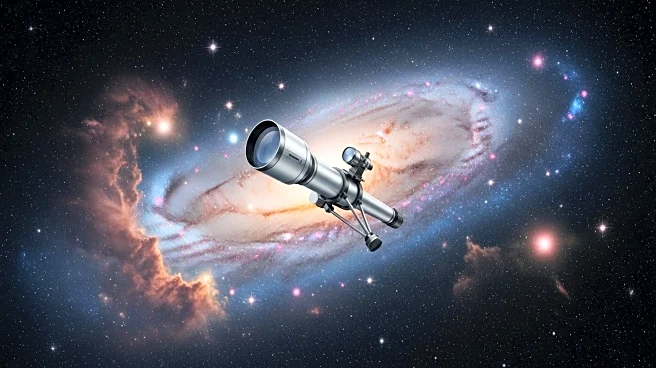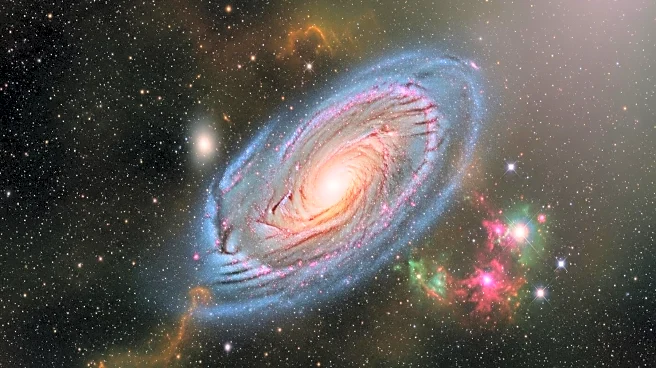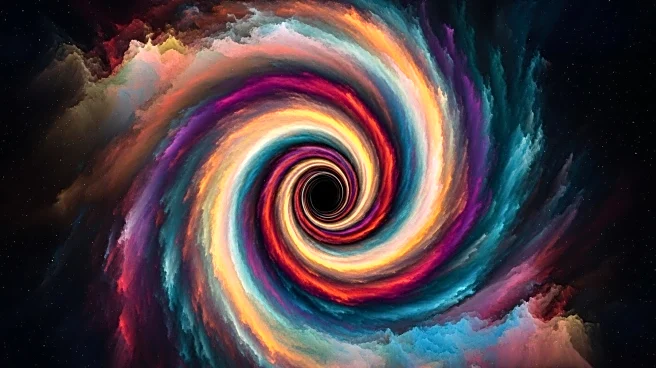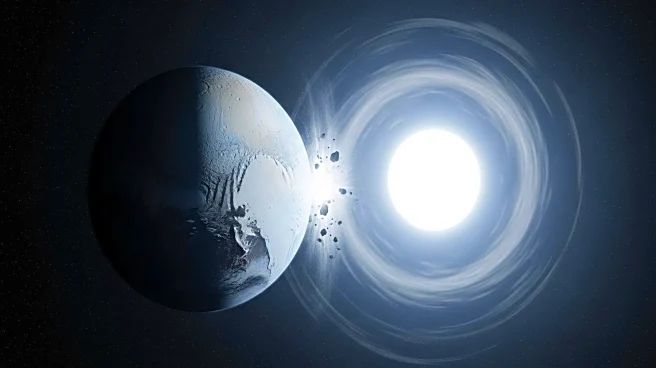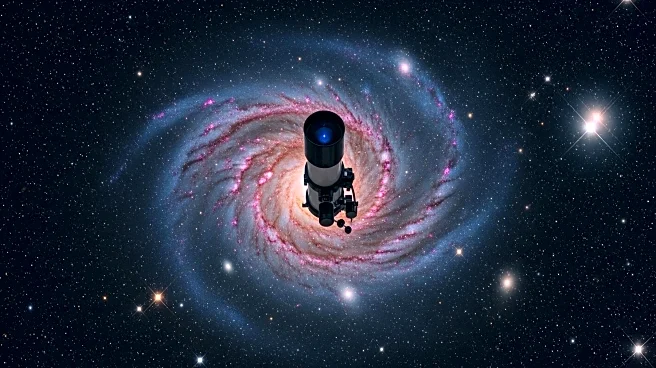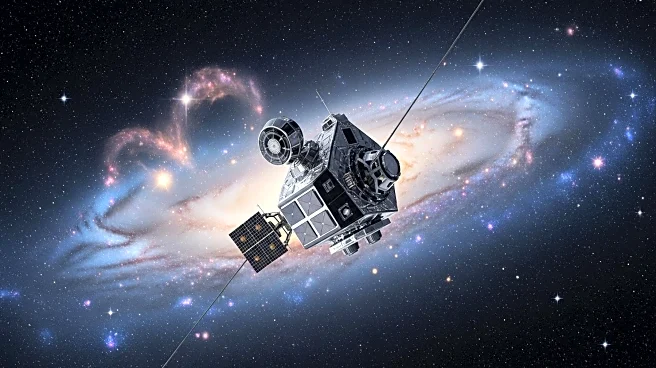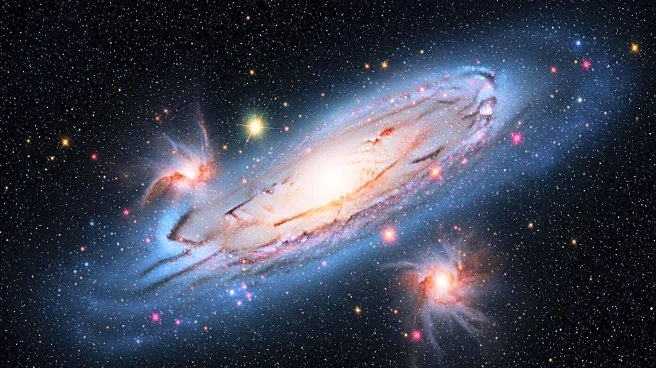What's Happening?
The Hubble Space Telescope has captured a new image of the spiral galaxy Messier 96, located 35 million light-years away in the constellation Leo. This image reveals a ring of star formation in the galaxy's outskirts, characterized by bubbles of pink gas surrounding hot, young stars. The asymmetric appearance of Messier 96, with uneven distribution of gas and dust, is believed to be influenced by the gravitational pull of neighboring galaxies. The new data from Hubble will aid in studying star formation within giant dusty gas clouds and the impact of stars on their environments.
Why It's Important?
The discovery of new star formation in Messier 96 provides valuable insights into the processes of star birth and the dynamics of galaxies. Understanding how stars form and interact with their surroundings is crucial for astrophysics, as it helps explain the evolution of galaxies and the universe. The asymmetric features of Messier 96 offer a unique opportunity to study the effects of gravitational interactions between galaxies, which can lead to new theories about galactic formation and behavior.
What's Next?
Astronomers will continue to analyze the data from Hubble to further understand the star formation processes in Messier 96. Future observations may focus on the galaxy's interaction with its neighbors and the resulting impact on its structure. These studies could lead to advancements in the understanding of galactic dynamics and the role of gravity in shaping galaxies.
Beyond the Headlines
The findings from Messier 96 highlight the importance of international collaboration in space exploration, as data from telescopes like Hubble are shared globally to advance scientific knowledge. The study of star formation also has implications for understanding the lifecycle of stars and the potential for habitable planets in other galaxies.

